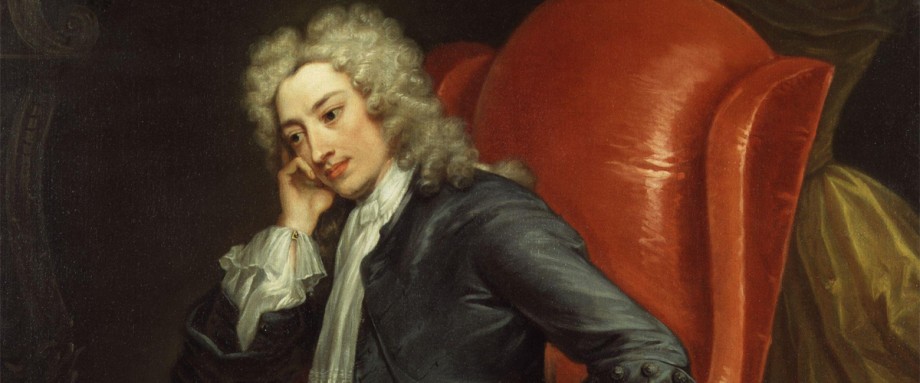Asleep in the Valley: Analysis
The poem begins almost lazily, with attention to details like the slow pace of the stream, the reflection it makes on the grass, and the ample sunlight. Like the slow stream that passes through the valley, the poem advances to the second stanza. The second stanza brings our eyes to a young soldier who seems to be asleep among the ferns and flowers of the valley. The soldier lies with his mouth slightly opened as if in a deep sleep. The poet compares this to the smile of an infant, which is symbolic of tenderness and innocence. This is perhaps out of the ordinary to describe a soldier as innocent and gentle as an infant. In this, we see the genius of Rimbaud, who uses unexpected analogies to present harsh reality. One can assume that what he meant by this was to tell us that soldiers are not the root cause of suffering, that they are not inherently violent individuals; they are merely instruments of war, plied to the ways of the masters of the world. So, in a way, they are innocent of the crimes they commit during a war. Thus, here we already see the beginnings of the Surrealist tradition, where strange juxtapositions are used to present reality.
In the line, ‘Ah, Nature, keep him warm; he may catch a cold,’ the tenderness the poet feels for the dead soldier is obvious. He implores Nature to keep his body from growing cold. Cold here is symbolic of death. The poet knows the soldier is already dead, but he wants his readers to wait till the last line of the poem to figure this important detail out. And that is why he uses the phrase ‘catch a cold’ for its colloquial meaning, alluding to contracting the common respiratory infection. The poem is written like a telescope which focuses on different parts of the valley and zooms in on the details. First, the poet focuses on a panoramic view of the valley, from which he moves to the mountains and then the body of the soldier in the meadow. He zooms in on the soldier’s feet and then his face, specifically his smile. Rimbaud waits until the last line of the poem to reveal that the soldier is dead. His delay in portraying the soldier’s death is perhaps to heighten the effect and shock the readers into seeing the negative impacts of war.
Asleep in the Valley: Annotations
Stanza 1
‘And leaves long strands of silver on the bright/Grass’- the sunlight falling on the stream causes it to leave its silver reflections on the green grass.
‘from the mountaintop stream the Sun’s/Rays’- Here, ‘stream’ issued to describe the similarity between the lucidity of the light falling on the valley with the lucidity of water.
Stanza 2
‘heavy undergrowth’- vegetation. Here, it means the thick bed of grass growing in the valley.
‘sun-soaked bed’- again, the water analogy is used here. The light is compared to water that has soaked the bed of grass, that is filled and warmed the grass.
Stanza 3
‘guile’: deception; trickery
Stanza 4
‘two red holes’: two bullet holes from which the soldier bled out, leading to his death.
Asleep in the Valley: Poetic Devices
Stanza 1:
‘A small green valley where a slow stream flows/ And leaves long strands of silver’- This poem is rhythmical and full of alliteration. This is the first instance of Alliteration used in the poem. Alliteration is the occurrence of the same sounds or same letters adjacently or in close quarters.
Stanza 2:
‘sun-soaked bed’- this is another instance of Alliteration
Stanza 3:
‘Ah, Nature, keep him warm; he may catch a cold’- this is an instance of an Apostrophe. An apostrophe is a figure of speech used to address an inanimate object or an abstract quality. This is also an act of Personification. Nature is personified as a human being who is to assume the role of a caretaker for the sleeping soldier.
Stanza 4
‘In his side, there are two red holes’- this line is an example of Metonymy. Metonymy is a figure of speech by which the name or meaning of a thing or concept is substituted by its attributes. Instead of writing ‘two bullet holes,’ Rimbaud writes ‘two red holes.’ Bullets puncture the body and cause bleeding, which turns the holes red. Thus, he substitutes the word bullet with red, which represents the quality of the bullet.
Rhyme Scheme
The poem is a sonnet. The octave is divided into two quatrains and the sestet into two tercets. The quatrains follow the abcb rhyme scheme, and the tercets, aab.
Asleep in the Valley: Central Idea
The central idea of the poem is the death of a young soldier as a result of the war. The body of the soldier is lying in a valley that is bursting with life. This accounts for the fact that even amidst death, life surrounds us. However, this can also mean that although life is beautiful and all around us, death is inevitable and sudden. Thus, the aim of life should be to embrace it. This poem also resounds his Libertine views as he did not believe in living cooped up in narrow ideologies and beliefs.
Asleep in the Valley: Theme
Sleep as Death: Death and sleep are used interchangeably in the poem. Death in this poem is represented as sleep, a peaceful and never-ending sleep—also, asleep which is safe from all further harm. Just as Rimbaud believed in embracing life, he believed in accepting death. For him, death is sad, poignant even, but ultimately, death is a savior. It ends all suffering and finally brings us the peace we long for.
The futility of War:
In spite of the beautiful imagery of the poem, it is a poem about war and its futility. The protagonist of the poem is a young soldier who is shot to death, probably by soldiers against whom he was fighting. The ‘humming insects’ are representative of the flies and insects that hover around corpses on the battlefield. Undercutting the image of a beautiful valley, we can see the destruction wrought by war. The poem is a gentle irony against the sacrifice of thousands of soldiers for the sake of war. In this poem, there is no glory in war. However, there is glory in life. And that is why war is futile and mindless.
The beauty of Life:
Amidst the wrecks of war, the poet manages to appreciate life in the form of sunlight, water, flowers, insects, and the grass on which the soldier is lying. Everything in the poem seems to be alive. He even turns the death of the soldier into a peaceful sleep to present life as the ultimate beauty.
Asleep in the Valley: Tone
The tone of the poem is slow and poignant but hopeful. The poet knows the tragedy well, but he feels in his heart that although the death of the soldier is devastating, he will finally attain a peace that is lasting and free from all pain and dangers of war.
The poem is a war poem with a different perspective. It focuses more on life than death. And it tells us to look for the blessings of life even in the midst of the darkness of war and death. As an extension of the message, it tells us of the futility of war. It also tells us that death is not an enemy. On the contrary, it is a peaceful end. Other than Asleep in the Valley: Analysis, Central Idea, and Theme, you can also refer to Asleep in the Valley: Summary.
Some online learning platforms provide certifications, while others are designed to simply grow your skills in your personal and professional life. Including Masterclass and Coursera, here are our recommendations for the best online learning platforms you can sign up for today.
The 7 Best Online Learning Platforms of 2022
- Best Overall: Coursera
- Best for Niche Topics: Udemy
- Best for Creative Fields: Skillshare
- Best for Celebrity Lessons: MasterClass
- Best for STEM: EdX
- Best for Career Building: Udacity
- Best for Data Learning: Pluralsight













